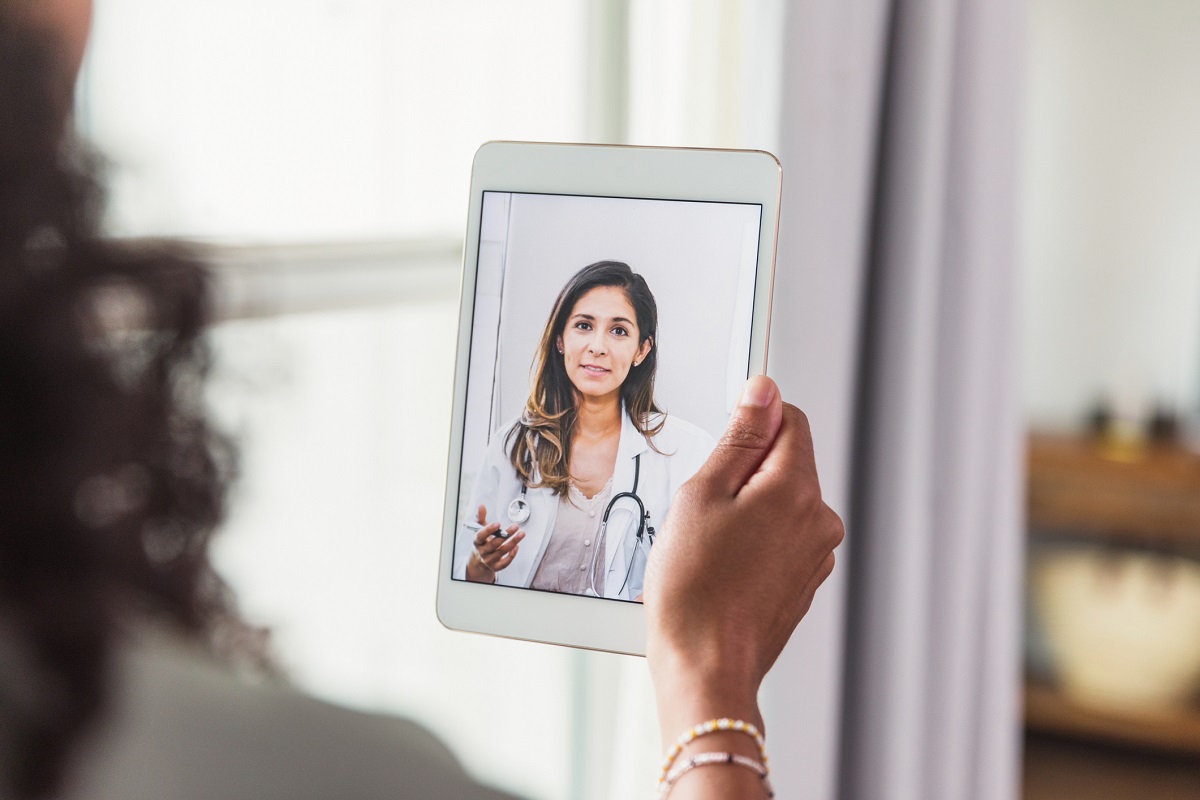The Medical Minute: Take along a ‘doctor in your pocket’ with OnDemand app

It’s the most wonderful time of the year – except when a sore throat, ear ache or other malady crops up unexpectedly when you’re far from home.
Instead of looking for an urgent care in an unfamiliar neighborhood or wondering if you should just wait until you get home, a virtual care service offers the opportunity to see a doctor from Grandma’s living room ― no matter what state you’re in.
“For common illnesses, this is a portable option to access Penn State Health,” said Chris LaCoe, vice president for virtual health at Penn State Health. “The urgent care app offers the ability to enroll, log on, identify your symptoms, select a provider of your choice and receive care, including a prescription if one is necessary, all within minutes.”
With Penn State Health OnDemand, for example, patients use secure video to connect face-to-face with a provider from an online group that provides urgent care 24/7. As many as four people can be connected, enabling family members in other locations to “attend” the appointment should the patient choose to include them.
The wait time to see a provider can be minimal using a virtual health service. Currently, using Penn State Health OnDemand, patients have an average wait time of about six minutes. The average length of a visit is about 10 minutes, LaCoe said. The cost is $59 per visit. Patients who have Highmark insurance and choose to use it will pay $15 or their plan’s co-pay.
Patients take active role
Telehealth visits sometimes require the patient help present physical findings, LaCoe said. For instance, if strep throat is suspected, the patient can use a phone video camera to assist the provider in visualizing the throat, or a parent may assist providers with identifying physical findings like a gentle tug on a child’s ear while the doctor observes whether the child winces. That might suggest an ear infection.
Bluetooth-enabled devices can integrate into the platform to access a blood pressure cuff or scale so that patients are able to report biometric data.
Minor ailments, such as sore throats, sinusitis, rashes and ear aches, can be treated easily with a virtual appointment. Others, such as a wound that needs to be stitched or access to a lab test, may best be served with an in-person visit at the discretion of the treating provider, LaCoe said.
COVID-19 advice available
With COVID-19 reoccurring in some areas, having digital access is even more important this holiday season, LaCoe said.
For those exhibiting COVID-19 symptoms, the OnDemand COVID-19 screening app connects them with a Penn State Health registered nurse who, at no cost through the app, conducts a screening visit. If additional medical testing or care is warranted, the nurse advises on the next steps to take. The app also provides access to COVID-19 travel testing and an online vaccine advisor who can answer questions about vaccine safety and how to sign up for a vaccine.
“We may see a surge of COVID-19 over the holidays as we’re mingling with relatives,” LaCoe said. “Also, as mask mandates have changed, we’re starting to see other ailments in the community that we didn’t see much of last year, like respiratory syncytial virus in children and the flu. Having the OnDemand app available in case you encounter these illnesses is very convenient.”
Use is expanding
In addition to urgent care, Penn State Health OnDemand care also is available for multiple programs and conditions, including dermatology, neurology, Amyotrophic Lateral Sclerosis (ALS), inflammatory bowel disease, behavioral health, maternal fetal and reproductive medicine and surgical follow up visits. Penn State Health doctors see patients in the specialty OnDemand programs, LaCoe noted.
In 2020, Penn State Health OnDemand logged 3,654 virtual, acute care visits, with 700 of those in November and December. This year has seen 2,700 OnDemand acute-care visits with the holiday season just beginning.
“Digital care is the way of the future,” LaCoe said. “Our goals are to reach more patients and save them time, money, effort, energy and open up accessibility to care from wherever they are and whenever it is convenient to them.”
Related content:
- The Medical Minute: Seven ways to get enough sleep this holiday season
- Article link The Medical Minute: When to head for urgent care instead of the hospital ER
The Medical Minute is a weekly health news feature produced by Penn State Health. Articles feature the expertise of faculty, physicians and staff, and are designed to offer timely, relevant health information of interest to a broad audience.
If you're having trouble accessing this content, or would like it in another format, please email Penn State Health Marketing & Communications.
